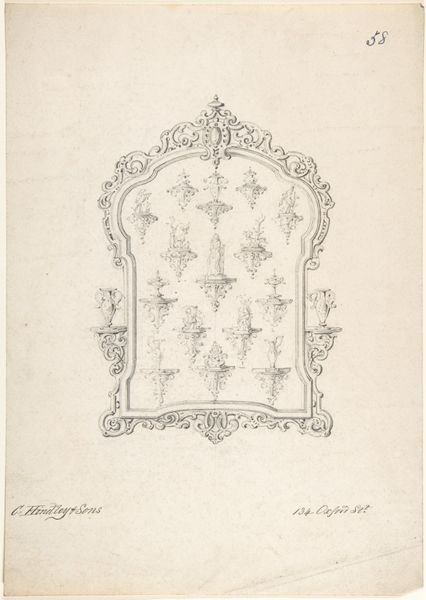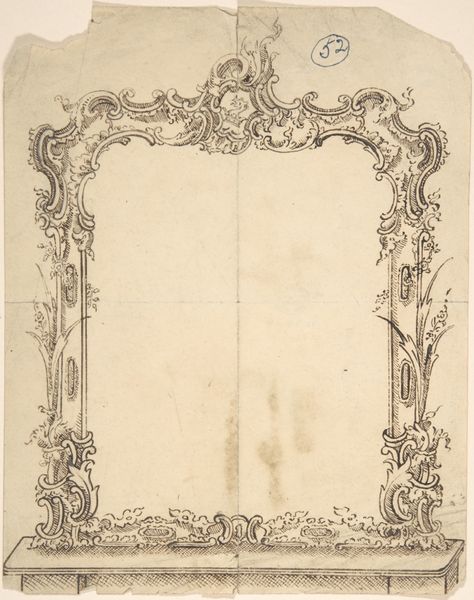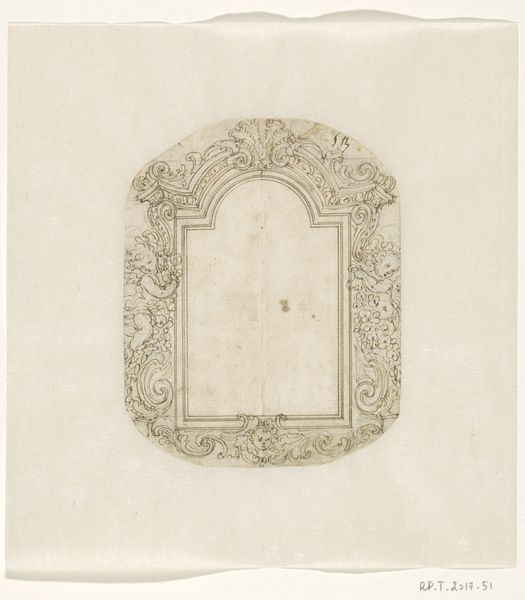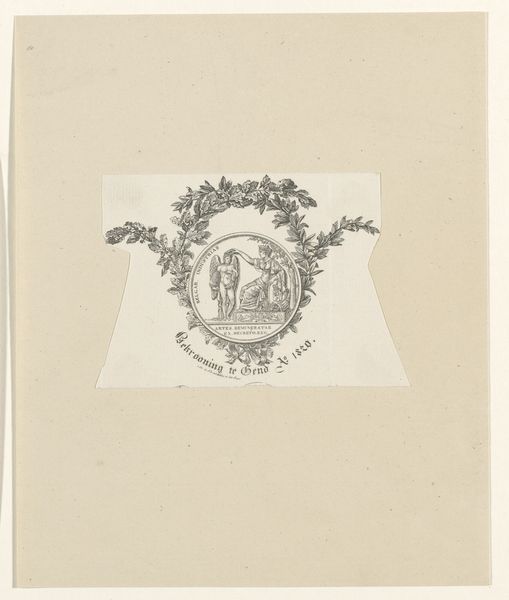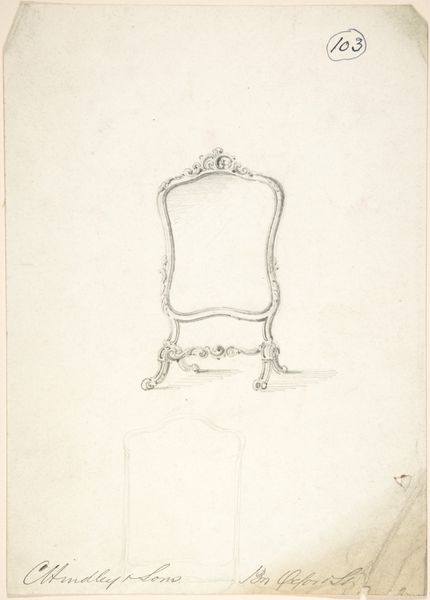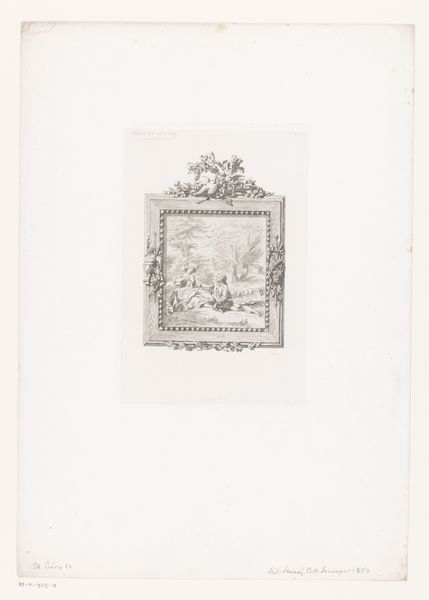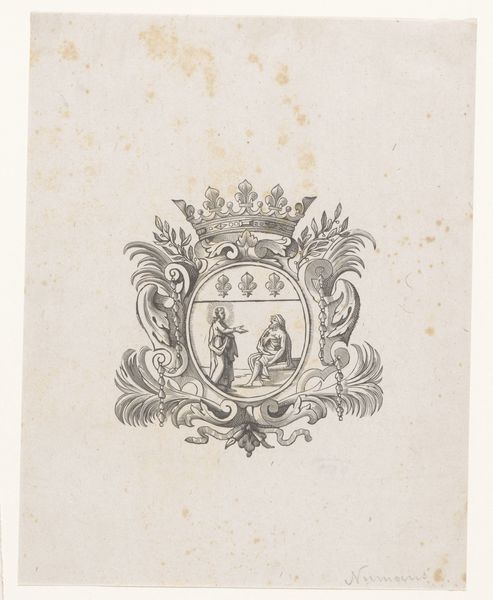
drawing, print, etching, paper, engraving
#
drawing
# print
#
etching
#
etching
#
paper
#
geometric
#
romanticism
#
engraving
Dimensions: height 185 mm, width 135 mm
Copyright: Rijks Museum: Open Domain
Curator: This delicate piece is "Spiegellijst," which translates to "Mirror Frame," created around 1836 by Charles Onghena. It's an etching, a dance of fine lines on paper, rendered in print and drawing mediums, which gives it this almost ghostly quality. Editor: It's incredibly ornate. I see this symmetrical frame adorned with twisting foliage and what looks like animal heads, almost lion-like, peeking out. The paper has aged to a soft ivory. I find its ethereal quality a bit haunting and yet incredibly inviting. Curator: I can see that. Romanticism often leans into that sort of feeling. Consider where art was at the time; romantic artists reacted against the cold reason of the Enlightenment by embracing feeling and subjective experience. The frame itself would have been a signifier of wealth, but one that is very intentionally adorned. Editor: What's intriguing is that the center of the frame, where one might expect a reflection, is left blank except for an almost pixelated looking grid pattern. What are we supposed to see here, a mirror image or something else? Curator: Exactly! I imagine it leaves the interpretation entirely open to the viewer. Are we supposed to project our own image into that void, to contemplate the very idea of the 'self,' framed by the societal structures represented by the elaborate decoration? Editor: The emptiness draws me in! It becomes a space for my own projections and imaginings. Without being confrontational, the lack of content feels defiant. I like how the paper’s aging gives the whole work a slightly surreal appearance, making you question its existence in real life. Curator: And this is what gives the print its quiet power. Etchings and engravings held a specific cultural role; this image would likely be available and potentially be seen as disposable. It wasn't meant to shock or provoke, rather, to suggest. Editor: I think that’s a very interesting element about the disposable imagery it provides as the material degrades over time, only deepening my awe. It holds time. Curator: And I find the choice of leaving it bare for speculation to be intriguing.
Comments
No comments
Be the first to comment and join the conversation on the ultimate creative platform.


